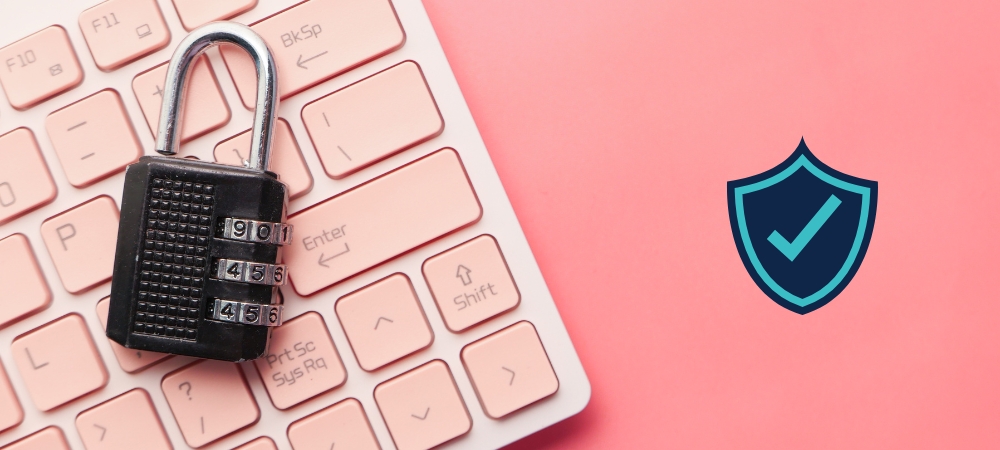A Digital Rights Management System is a system to enforce the rights of owners of digital media, software, or devices. The system controls the use of protected material by limiting the number of times a song can be played or limiting the number of copies made. Digital Rights Management or DRM content protection identifies the source or owner of the material or prevents the material transfer from one device to another.
Table of Contents:
- DRM Content Protection and DRM Encryption Meaning
- DRM working in Browsers and Devices
- Major Providers of DRM Providers
- What is DRM Protected Video Content and Streaming?
- How to DRM Protect a Video File?
- Why need VdoCipher for DRM Content Protection?
- DRM Protected Content Examples
- What are the Benefits of DRM Protected Content?
- FAQs
In other words, Digital Rights Management (DRM) refers to the technological protection measures used to prevent unauthorized access, copying, use and distribution of copyrighted digital media and information. Various products and services employ DRM to protect copyright and related rights. It is in the video, audio, E-books, digital software, video games, and digital television applications.
Explore More ✅
VdoCipher empowers 3000+ course creators, event organizers and broadcasters with DRM protected video streaming, ensuring smooth playback in 120+ countries.
DRM Content Protection and DRM Encryption Meaning
The term DRM Content Protection refers to several different processes used to control the use of digital media, software, or devices designed to prevent unauthorized duplication or use of the protected material. Some of the included processes are:
Digital Rights Management (DRM): Refers to a range of technologies used to enforce the rights of digital media owners, particularly concerning the use of copyrighted material. For example, DRM content protection ensures that the protected material is only played on specific devices or controls the transfer of protected material from one device to another. The way DRM works usually depends on the content type and the distribution platform. Still, even when those things are the same, two content providers can use different methods based on the level of restrictions they want to apply.
DRM Encryption: Process of encoding the protected material in a way that makes it unreadable without the correct key. For example, material encrypted using the Digital Rights Management (DRM) process may require a computer or device to be registered to receive the decryption key. The main reason DRM creation was to protect the copyright holder’s interests.When you purchase a copy-protected file, you aren’t actually purchasing the file itself, you’re purchasing a license to use the file. This license is held in a database on a DRM server, and this database is what DRM Encryption protects.
DRM working in Browsers and Devices
DRM Protection works alongside encryption, the videos are first encrypted and the encryption key is hidden in the CDM(content decryption module) or hardware-backed protection.
Every time a user clicks on the play button, a license request is created and verified by the DRM server and sent back to the player, after the player sends the license key to the DRM module, the DRM content is decrypted and sent to the player in chunks.
In browsers like Chrome and Firefox, Google Widevine CDM is integrated by default, ensuring a seamless user experience on DRM-requiring sites. The Google Widevine CDM operates within a sandbox environment, enhancing security and user privacy. Users are notified of CDM usage and retain the option to disable the CDM, although this may impair functionality on certain websites.
In Android and iOS/Safari, DRM content playback is facilitated by DRM framework which uses hardware-backed protection to secure premium content and user credentials. These frameworks enable Android and Apple devices to support various DRM technologies, ensuring that protected content can be securely streamed and played. The content protection provided by the DRM framework depends on the security and content protection capabilities of the underlying hardware platform. For example, L1 security level provides maximum security in comparison to L3 compatible devices.
Major Providers of DRM Providers
A typical DRM Content Protection consists of multi DRM, these different DRMs caters to different devices and browsers. The major ones are:
- Google Widevine DRM solution: It supports Desktop/Laptop (Windows, Mac, Linux) Chrome, Firefox, Edge. Android Chrome, Edge, Android TV, Android TV, Chromecast.
- Apple Fairplay DRM Solution: It supports Mac Safari, IOS Safari, IOS App
- Microsoft Playready DRM solution: It supports Edge in Windows. Windows Edge is also supported by Google Widevine, so Playready is not an absolute necessity.
What is DRM Protected Video Content and Streaming?
DRM Protected video content is only available to people who have the right to access it. A video file protected by DRM encryption will no longer be accessible by just anyone. DRM protects the video file by ensuring the content is stored and transmitted in an encrypted format so that only authorized users and devices can access it. Multi-DRM schemes encrypt and package the video content before streaming for improved and more excellent device compatibility. When a user attempts a video playback, the video player requests a key from the license server. Before issuing a license response with a decryption key, the server checks for the authorization of the user and device. Finally, the player decrypts and plays the content for the user.
Preventing unauthorized video downloads requires a multifaceted approach. While DRM is effective, it’s not sufficient on its own. Explore why is DRM not enough to protect video piracy and what additional steps you can take.
How to DRM Protect a Video File?
When we upload video content on websites or release premium content on online platforms, a major concern is content security. There are chances that someone may download and misuse the video content if it is not protected or secured. Also, there are various methods available to protect digital content so that no one can copy or download the content unauthorizedly and misuse it. One such way is implementing DRM or Digital Rights Management to protect a video file. Below is a DRM Workflow mechanism.
Source: Input video files upload or transfer to cloud storage such as AWS S3.
Encoding: The input video file is packaged and encoded into Adaptive Bitrate Streaming (ABR) formats like HLS or MPEG-DASH.
Encryption: The video file encrypts with digital keys provided by the DRM License provider during the encryption process.
Storage: The video files transfer to a Content Delivery Network (CDN) such as Amazon CloudFront.
Authentication: The video player makes an authentication request from the DRM server to ensure the license validity.
Playback: Once authenticated, the video player unlocks the video and allows for video playback.
Why need VdoCipher for DRM Content Protection?
Setting up the whole previously described workflow is a tedious task. That is why only a few technology-equipped media houses like VdoCipher provide the complete package to end-users. The package adheres to all your uploading requirements through FTP or even via direct links from Vimeo etc. Well, uploading is easy but what goes parallelly like Encoding, Encryption, Global Distribution and Storage, and Authenticating via License Provider are difficult to implement. For the same, VdoCipher has done all for you, even playback and integration with Google Widevine DRM & Apple FairPlay DRM for the widest support of devices and browsers.
So whether you are an eLearning solution provider or anyone whose videos are precious and piracy cannot be afforded, VdoCipher is the best choice for you. You can go through their pricing to find the affordable plan as per your need. As a rule of thumb, the more you go high in consumption, the lesser the will be per unit charges.
Explore More ✅
VdoCipher empowers course creators, event organizers and broadcasters with expert multi DRM solutions, ensuring smooth playback globally.
DRM Protected Content Examples
Any online streaming is an excellent example of DRM protected content. Online platforms use DRM to protect their content before releasing it online.
Here are a few examples of DRM protected content
- Online Video Streaming: Users stream content online through a browser or application. Here every view is validated via the license server. Any video streamed through DRM can’t be downloaded and screen recorded in most cases.
- Video games: Whenever you buy a game from a store online, instead of buying that you are basically buying the license to play that game on your device. Whenever you buy a game on Steam, PSN, or Nintendo store, you get a license to download and play that game which is added to your account. This license allows you to download the game anytime you want.
- Audio streaming: DRM in audio streaming’s case works very similar to the ones in video streaming. DRM ensures that any audio streamed through the respective music player can’t be downloaded.
What are the Benefits of DRM Protected Content?
DRM lets content creators decide what should be done with their content, and it offers many advantages, such as:
- Protection from any revenue loss due to piracy
- Restricts any unauthorized access to the content.
- Prevents any piracy of the content
- Provides an extra level of security to the content
There are several major devices and browsers that support DRM. One of the most widely used DRM is Google Widevine and Apple Fairplay.
FAQs
What is a DRM Server?
A DRM server is a database that stores information on the files licensed to you. A DRM server hosts on a server on the Internet or a local database on your computer. The DRM server is encrypted by DRM Encryption.
What is the difference between DRM and copyright enforcement?
Copyright restricts who can distribute media, while DRM software restricts how users access protected media. Copyright provides leverage against illegal distribution. It means the largest distribution platforms must already adhere to the demands of large publishers, studios, and software companies.
How do web browsers support DRM-protected video streaming?
DRM-protected video streaming consumption is by using Smart HTML5 media player. The player uses the Encrypted Media Extensions (EME) API to enable the playback of the protected content.
Supercharge Your Business with Videos
At VdoCipher we maintain the strongest content protection for videos. We also deliver the best viewer experience with brand friendly customisations. We'd love to hear from you, and help boost your video streaming business.


My expertise focuses on DRM encryption, CDN technologies, and streamlining marketing campaigns to drive engagement and growth. At VdoCipher, I’ve significantly enhanced digital experiences and contributed to in-depth technical discussions in the eLearning, Media, and Security sectors, showcasing a commitment to innovation and excellence in the digital landscape.
